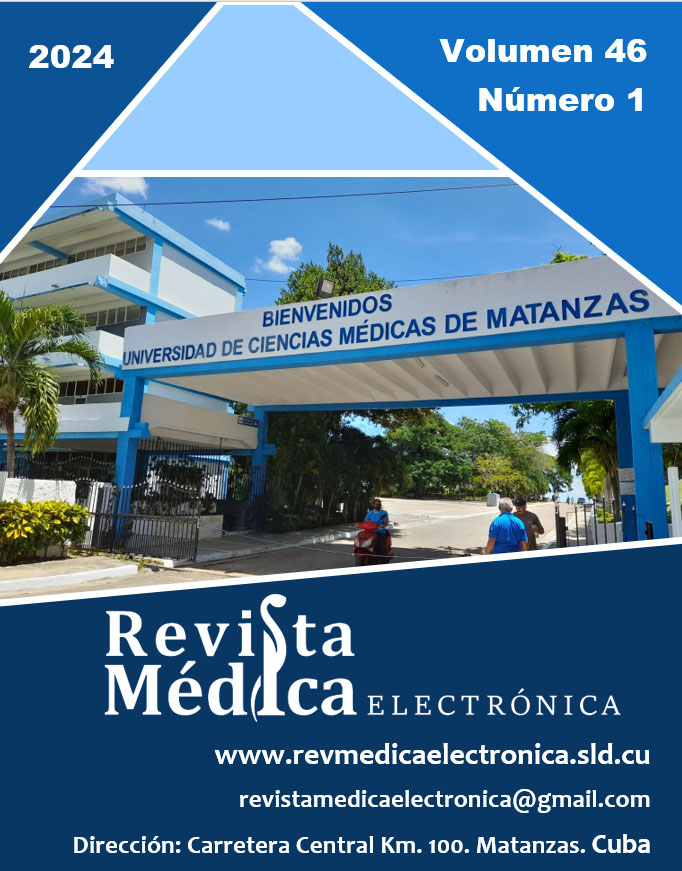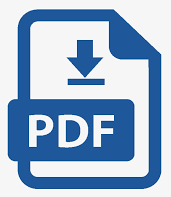Efectos de una estrategia pedagógica integral para fomentar la atención en niños
Palabras clave:
estrategia pedagógica integral, atención, niñosResumen
Introducción: La atención es el estado de observación y alerta que permite la toma de conciencia de lo ocurrido en el entorno, y constituye una dirección integral del trabajo pedagógico, con énfasis en infantes y niños, según las particularidades individuales.
Objetivo: Valorar los efectos de una estrategia pedagógica integral para fomentar la atención en niños.
Métodos: Investigación descriptiva-explicativa de orden correlacional. Se estudia a 21 niños varones entre 6-7 años, con trastorno por déficit de atención e hiperactividad. Se implementa por seis meses una estrategia pedagógica integral para valorar sus efectos.
Resultados: Se evidencia una mejora notable en los resultados después de la intervención, especialmente en la reducción de omisiones y comisiones (p = 0,001953; p = 0,003906, respectivamente), tiempo de reacción (p = 0,009766), variabilidad (p = 0,009766), sensibilidad perceptual (p = 0,001953), e índice de perseveración (p = 0,003906).
Conclusiones: La intervención para mejorar la atención y control inhibitorio en los niños fue efectiva. Se reducen errores y mejora el tiempo de reacción, por lo cual se evidencia que la estrategia pedagógica integral puede tener efectos positivos en la capacidad de atención en niños. Se recomienda prospectivamente ampliar la investigación al sexo femenino, y realizar una investigación de tipo experimental a corto plazo, valorando los efectos en grupos independientes con distintas intervenciones.
Descargas
Citas
2. Broderick PC. Learning to breathe: A mindfulness curriculum for adolescents to cultivate emotion regulation, attention, and performance. Oakland: New Harbinger Publications; 2021.
3. Lovett BJ, Nelson JM. Systematic review: Educational accommodations for children and adolescents with attention-deficit/hyperactivity disorder. J Am Acad Child Adolesc Psychiatry. 2021;60(40):448-57. DOI: 10.1016/j.jaac.2020.07.891.
4. Shephard E, Zuccolo PF, Idrees I, et al. Systematic review and meta-analysis: the science of early-life precursors and interventions for attention-deficit/hyperactivity disorder. J Am Acad Child Adolesc Psychiatry. 2022;61(12):187-226. DOI: 10.1016/j.jaac.2021.03.016.
5. García-Hermoso A, Ramírez-Vélez R, Lubans DR, et al. Effects of physical education interventions on cognition and academic performance outcomes in children and adolescents: a systematic review and meta-analysis. Br J Sports Med. 2021;55(21):1224-32. DOI: 10.1136/bjsports-2021-104112.
6. Mitchell D, Sutherland D. What really works in special and inclusive education: Using evidence-based teaching strategies. Londres: Routledge; 2020.
7. Noroozi O, Pijeira-Díaz HJ, Sobocinski M, et al. Multimodal data indicators for capturing cognitive, motivational, and emotional learning processes: A systematic literature review. Educ Inf Technologies. 2020;25:5499-547. DOI: 10.1007/s10639-020-10229-w.
8. Komari A, Setyawan H, Kriswanto ES, et al. The effect of physical education (PE) class management using badminton materials to improve elementary school (ES) students’ concentration. Retos [Internet]. 2024 [citado 16/08/2024];55:520-6. Disponible en: https://dialnet.unirioja.es/servlet/articulo?codigo=9481191
9. Setyawan H, Suyato S, Ngatman N, et al. The effect of implementing physical education class management archery material to improve concentration elementary school students. Retos. 2024;56:879-86. DOI: 10.47197/retos.v56.105216.
10. Calero Morales S, Garzón Duque BA, Chávez Cevallos E. La corrección-compensación en niños sordociegos con alteraciones motrices a través de actividades físicas adaptadas. Rev Cubana Salud Pública [Internet]. 2019 [citado 16/08/2024];45(4). Disponible en: http://scielo.sld.cu/scielo.php?script=sci_arttext&pid=S0864-34662019000400004
11. Pinto Flores IE, Calero Morales S, Vaca García MR, et al. Tiempo, ansiedad y concentración: influencia en la efectividad en tiros libres del baloncesto femenino. Rev Cubana Invest Bioméd [Internet]. 2018 [citado 16/08/2024];37(1):75-84. Disponible en: http://scielo.sld.cu/scielo.php?pid=S0864-03002018000100008&script=sci_arttext&tlng=en
12. Masini A, Marini S, Gori D, et al. Evaluation of school-based interventions of active breaks in primary schools: A systematic review and meta-analysis. J Sci Med Sport [Internet]. 2020 [citado 16/08/2024];23(4):377-84. Disponible en: https://pubmed.ncbi.nlm.nih.gov/31722840/
13. Santillán Murillo RO, Villagómez Cabezas AV, Chávez Hernández JP, et al. Efectos del voleibol recreativo en la ansiedad y concentración de estudiantes universitarios. Rev Cubana Inv Bioméd [Internet]. 2024 [citado 16/08/2024];43. Disponible en: https://revibiomedica.sld.cu/index.php/ibi/article/view/3302
14. Engel Rocamora A, Coll Salvador C. Entornos híbridos de enseñanza y aprendizaje para promover la personalización del aprendizaje. RIED [Internet]. 2022 [citado 16/08/2024];25(1):225-42. Disponible en: https://revistas.uned.es/index.php/ried/article/view/31489
15. Hudzaifah Y, Ulfah N, Pamungkas MI. Child-Friendly Teaching Approach for Arabic Language in Indonesian Islamic Boarding School. Int J Lang Educ [Internet]. 2021 [citado 16/08/2024];5(1):501-14. Disponible en: https://eric.ed.gov/?id=EJ1293750
16. Rodríguez ÁF, Páez Granja RE, Altamirano Vaca EJ, et al. Nuevas perspectivas educativas orientadas a la promoción de la salud. Educ Méd Super [Internet]. 2017 [citado 16/08/2024];31(4). Disponible en: https://ems.sld.cu/index.php/ems/article/view/1366
17. Tonguino Rosero S, Rosero Carvajal HE, Villamarín Betancourt EA, et al. Factores relacionados con el desarrollo psicomotor en niños menores de cinco años hospitalizados. Rev Cubana Inv Bioméd [Internet]. 2024 [citado 16/08/2024];43. Disponible en: https://revibiomedica.sld.cu/index.php/ibi/article/view/1996
18. DuPaul GJ, Evans SW, Mautone JA, et al. Future directions for psychosocial interventions for children and adolescents with ADHD. J Clin Child Adolesc Psychol. 2020;49(1):134-45. DOI: 10.1080/15374416.2019.1689825.
19. Homack S, Riccio CA. Conners' Continuous Performance Test (2nd ed.; CCPT-II). J Atten Disord. 2006;9(3):556-8. DOI: 10.1177/1087054705283578.
20. Rodríguez Torres ÁF, Naranjo Munive JE, Merino Alberca WV, et al. Adaptaciones curriculares en la enseñanza para alumnos con problemas respiratorios. Rev Cubana Med Gen Integr [Internet]. 2017 [citado 16/08/2024];33(4). Disponible en: http://www.revmgi.sld.cu/index.php/mgi/article/view/717/167
21. Calero-Morales S, Vinueza-Burgos GdD, Yance-Carvajal CL, et al. Gross Motor Development in Preschoolers through Conductivist and Constructivist Physical Recreational Activities: Comparative Research. Sports. 2023;11(3):61. DOI: 10.3390/sports11030061.
22. Pizarro M, Saffery K, Gajardo P. Trastorno del procesamiento sensorial. Una mirada conjunta desde la terapia ocupacional y la otorrinolaringología. Rev Otorrinolaringol Cir Cabeza Cuello. 2022;82(1):114-26. DOI: 10.4067/s0718-48162022000100114.
23. Mavilidi MF, Drew R, Morgan PJ, et al. Effects of different types of classroom physical activity breaks on children’s on‐task behaviour, academic achievement and cognition. Acta Paediatr. 2020;109(1):158-65. DOI: 10.1111/apa.14892.
24. Obrovská J, Svojanovský P, Kratochvílová J, et al. Promises and challenges of differentiated instruction as pre-service teachers learn to address pupil diversity. J Educ Teach. 2024;50(3):403-20. DOI: 10.1080/02607476.2023.2247356.
25. Calero-Morales S, Villavicencio-Álvarez VE, Flores-Abad E, et al. Pedagogical control scales of vertical jumping performance in untrained adolescents (13–16 years): research by strata. PeerJ. 2024;12:e17298. DOI: 10.7717/peerj.17298.
Publicado
Cómo citar
Número
Sección
Licencia
La misma permite:
• Copiar y redistribuir el material publicado en cualquier medio o formato.
• Adaptar el contenido.
Esto se realizará bajo los siguientes términos:
• Atribuir los créditos de los autores e indicar si se realizaron cambios, en cuyo caso debe ser de forma razonable.
• Uso no comercial.
• Reconocer la revista donde se publica.
Se mantienen los derechos de autoría de cada artículo, sin restricciones.







